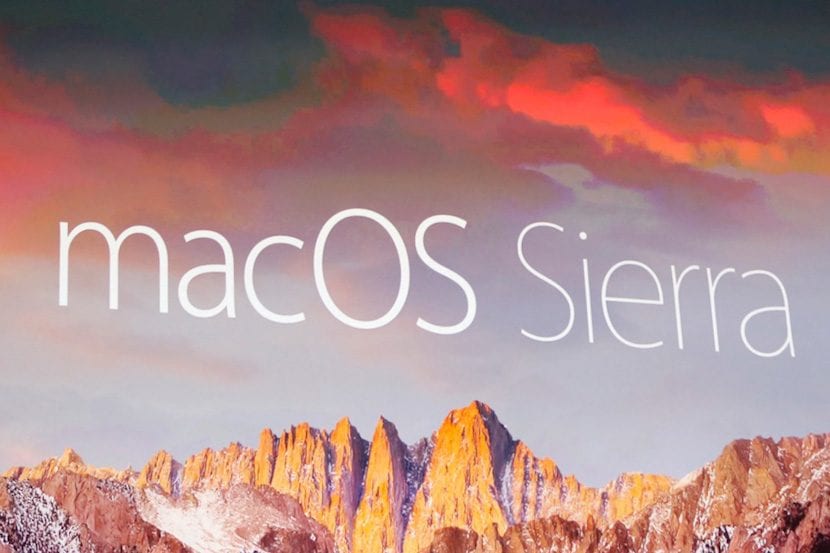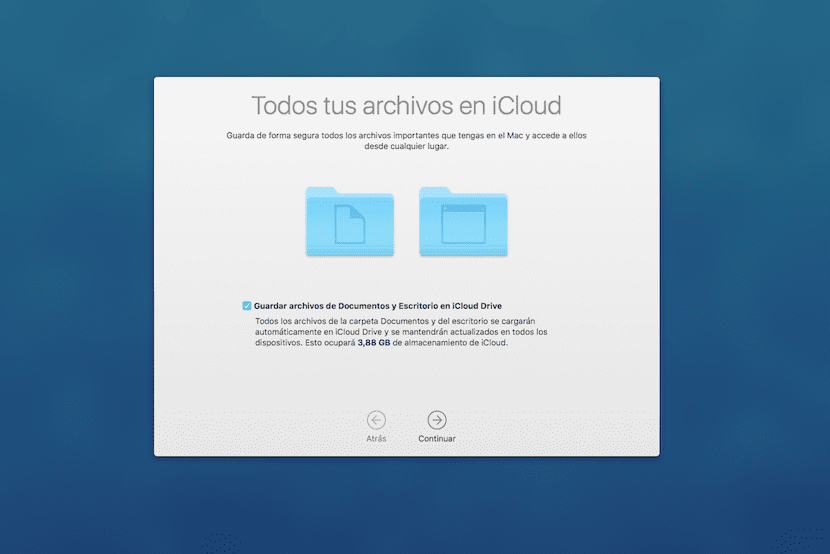
Once again we are going to talk about the new service offered by macOS Sierra, the possible automatic synchronization of the Documents and Desktop folders of your Mac with iCloud so that you can have the files you have in those locations accessible from anywhere.
In a previous article we already told you how the system works but we have continued working with it and we have discovered the real way of working and for that reason we want you to have it very clear before you put your hands on your head.
As you already know, when macOS Sierra is installed, the first thing the system asks you is if you want to activate the automatic synchronization of those two folders or locations. As you already know, 99% of users have their files located either on the Desktop itself or in the Documents folder, That is why Apple has decided that the two locations that are synchronized are those.
As well we have told you that the moment you activate this new synchronization, start uploading files to iCloud cloud, so you must take into account the space you have contracted so that everyone can be accommodated, otherwise you will be informed that you do not have enough space. In addition, another thing that we have explained to you is that when the files are uploaded to the iCloud cloud, the files that prevail when you want to deactivate that synchronization are those of the cloud, so immediately in the event that you deactivate the option in System Preferences> iCloud> iCloud Drive, the system informs you that the files to be deleted are those that are "local" on your Mac in those two locations and that those in the iCloud cloud will remain intact.
Now, the only thing we had left to try was to activate this service on more than one Mac. Many users only have an Apple computer so this situation is difficult for them to experience, but in my case I have an iMac on House and another at work besides having a 12-inch MacBook, the thing changes and it is that when you activate the synchronization system in all those Macs you have to take into account how the changes occur.

It is clear that since everything is synchronized there will no longer be a problem and that is that everything that you locate on the Desktop of one of those Macs will appear in a few seconds on the Desktop of the others. The same happens with the Documents folder. Therefore, if there is something that you do not want that arrives from one Mac to another, you must have a new folder within your folder hierarchy for it; I have called her OWN FILES. In it I place installer files or very large things that I do not want to upload to the cloud because otherwise it will collapse very quickly and I will have to buy more space which is ultimately what Apple wants.
Once we have this clear, I can tell you what happened on my Macs when I activated the synchronization option on the second Mac. I activated the option first on the iMac, so what I had in it on those locations has uploaded to my iCloud cloud. The next day I activated the option on my 12-inch MacBook and what I have observed on the desktop of it is that everything that I had on the iMac desktop has appeared on the MacBook Desktop and what was on the MacBook desktop the system has located in a folder that it has created especially for it and that has been doubled on the iMac.
In short, when you activate the synchronization on a new Mac what happens is that what you have in the cloud is downloaded to the new Desktop and what you have on that Desktop is located in a folder all saved, it is uploaded to the cloud and that same folder is copied to the other computers. When that new folder already appears on both computers, if you remove the files that are inside and relocate them to the Desktop or in Documents, those changes occur on all computers.
Taking a good look at this way of working, it has been thought so that when we connect a new Mac, the files are not mixed automatically, but instead are placed in a folder and we are the ones who later decide what to do with them.
I have 2 mac and if the truth is that it is a mess and it is not good! I prefer to leave the options deactivated and activate the copies of timemachine and that's it! In the case that you want a file for something in particular, use any cloud program !!
Hi. The same thing happened to me (I got a huge scare when I thought that I had deleted everything from the MacBook Air, that I activated it after the user that I have on my father's iMac). So the operation on that of deleting locally if you deactivate is like the iCloud Contacts and it doesn't ask you "what do you want to do with the contacts etc of this iPhone, do I keep or delete them?" don't you ask something like that? Thanks greetings!